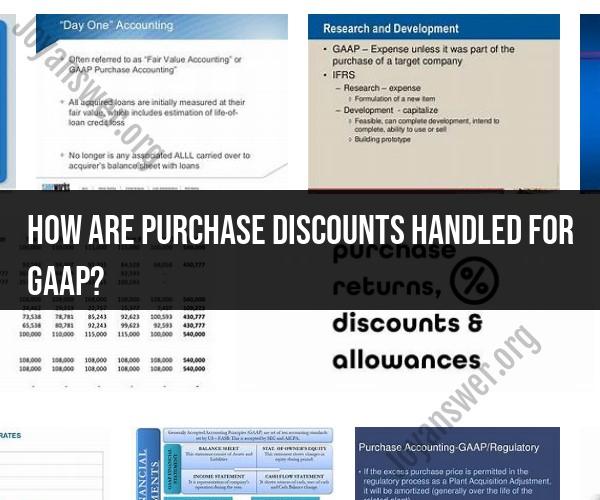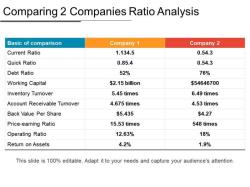How are purchase discounts handled for GAAP?
Generally Accepted Accounting Principles (GAAP) provide guidelines for the accounting treatment of purchase discounts, which are often offered by suppliers to encourage early payment of invoices. The handling of purchase discounts under GAAP typically involves two methods: the gross method and the net method. Here's an overview of both methods:
Gross Method:
Recording the Purchase: When a company makes a purchase on credit and receives an invoice with terms that include a discount for early payment, the company initially records the full purchase amount without considering the discount.
Recognizing the Discount: If the company makes a payment within the discount period (i.e., pays early), it will later recognize the discount as a reduction of the purchase cost. This recognition occurs when the payment is made.
Journal Entries:
- Initial Purchase: Debit Accounts Payable (full invoice amount) / Credit Inventory or Expense (full invoice amount)
- Payment within Discount Period: Debit Accounts Payable (discounted amount) / Debit Purchase Discounts (discount amount) / Credit Cash (full invoice amount)
Net Method:
Recording the Purchase: Similar to the gross method, the company initially records the full purchase amount without considering the discount.
Recognizing the Discount: However, under the net method, the company estimates the potential discount and records it as a liability (Purchase Discounts Forfeited) at the time of purchase. This liability is then reduced when the payment is made, and the actual discount is known.
Journal Entries:
- Initial Purchase: Debit Accounts Payable (full invoice amount) / Credit Inventory or Expense (full invoice amount)
- Recognizing the Estimated Discount: Debit Accounts Payable (estimated discount amount) / Credit Purchase Discounts Forfeited (estimated discount amount)
- Payment within Discount Period: Debit Accounts Payable (discounted amount) / Credit Cash (full invoice amount) / Credit Purchase Discounts Forfeited (difference between estimated and actual discount)
The choice between the gross and net methods can have an impact on a company's financial statements and the timing of recognizing expenses. The net method is often considered more accurate because it recognizes the estimated discount liability upfront. However, both methods are acceptable under GAAP, and companies should consistently apply the method they choose.
It's important for businesses to carefully consider their payment terms, discount policies, and the method they use to account for purchase discounts to accurately reflect their financial position and performance in their financial statements. Additionally, specific rules and requirements may vary depending on the jurisdiction and industry, so it's advisable to consult with a professional accountant or refer to the applicable accounting standards for detailed guidance.











